My journey to the future
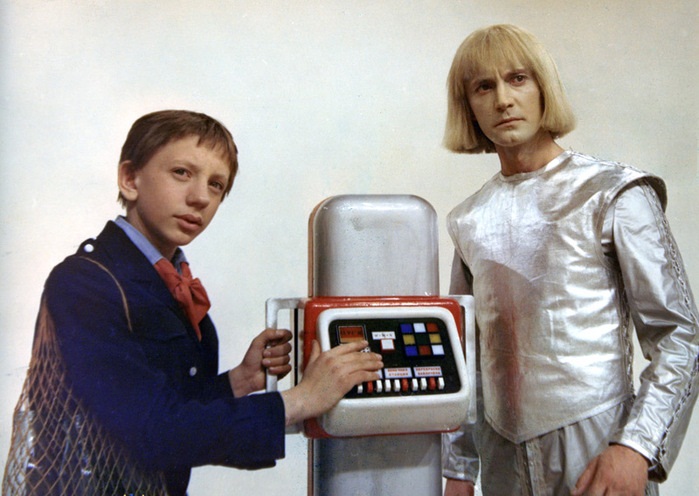
It was a quiet autumn evening. Nothing foreshadowed trouble. It was getting dark. I was finishing a planned computer upgrade, during which, for reasons already lost in history, it was necessary to reset the BIOS. The matter is not tricky. The location of the battery and jumpers Reset on the motherboard are known - go ahead! After switching on and loading Windows 7, I was ultimately told that the yard was a distant future, namely, the 14201st year.

')
Adventures are just beginning ...
Preamble
As a matter of fact, transferring time when resetting the BIOS is not a surprise. I used to be thrown back and forth for a year. But here - at once for 12 thousand years! Something out of the ordinary. Looking at the current date and time
Lyrical digression
At different times, different computer technologies, programmers and other experts assumed a global apocalypse due to the inability of the computer to process a certain date correctly. Most people were wrong. Although not always. Most discussed dates:
- 2000 or Y2K - a lot of text has already been written, welcome to Wikipedia, I don’t want to repeat.
- 2011 or Y1C is a local Taiwan problem, North Korea and maybe someone else leading the calendar from various non-standard events.
- 2036 is the end of 64-bit time in the NTP protocol. The creators of the protocol swear that for a variety of reasons, nothing bad will happen, but they may well underestimate the creative power of the Indian programming school.
- 2038 or Y2K38 - the end of 32-bit time. Any programs that use time_t, many of the functions of time.h and counting the chronology from 1970, are fascinated by watching the pink bird Oblomingo pass by.
- 10,000 is the transition from 4-digit to five-digit years. It would seem - firstly, where would the glitch come from? And secondly - we do not care, we will not live because. But no. Already today, a number of simulation programs, calculations and predictions that require such dates are working. And on the same Wikipedia now there are examples of incorrect output and calculation of five-digit dates even in such serious programs as Microsoft Office and OpenOffice. In addition, 12/31/9999 is the maximum possible value for the .NET DateTime class in the latest version of .NET. Put a reminder on your phone - “move to the next version of .NET until 9999”.
- 30827 - the last year for the SYSTEMTIME Windows structure and functions that use it (GetLocalTime, GetSystemTime)
- 292 277 026 596 year - the end of 64-bit time. So to navigate - the Earth will fall on the Sun in just 7,500,000,000 years (38 times less time). The number resulted just for the sake of scale.
Assistant, scalpel!
So, in the yard in 14201. Just between the very close and real Y2K38 \ 10000 and long before the unlikely 30827 \ multi_ billions. Conveniently sitting down in an
- Green is the most uninteresting and most demanding respect for its creators. Programs that started and continued to work stably in full functionality. Bravo, hats off.
- Yellow - programs that started and mostly earned, which, however, issued warnings or incorrectly calculated time intervals.
- Orange - programs that run, but dropped when accessing some functions related to the date and time.
- Red - programs that crashed at the start or issued a message in the spirit of "I can not work" and closed.

- Mspaint - earned great. And what will he do
- Notepad - works, including the function to insert the date by F5
- Doctor Web - started up and said that my license has expired. In fact, by 14201 the truth will end. Correct behavior
- Killcopy (this is such a utility for copying files) - it worked correctly, including the functions of measuring copying speed, elapsed and remaining copying time
- Media Player Classic - works, including all functions for displaying file duration and playback time
- Microsoft Outlook - works correctly, including receiving and sending emails, displaying the date of their arrival / departure, sorting by date
- Tortoise Svn - works without errors
Bravo, green band!

- Windows 7 as a whole - started and earned. All the basic functions of working with the file system, network, drivers, control panel applets, administration, etc. work right. Watch on the taskbar is generally designed for 6-digit number of years. Two little things - the calendar does not show dates greater than 2099 and time is not synchronized with the Internet. But clear messages are being issued about this and, in general, these facts do not spoil the overall impression.
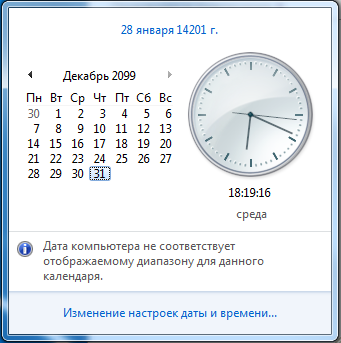
- Windows OS calculator - works, but strangely displays the date selection window

- Microsoft Word and Excel - earned, including the function of inserting the date and time (inserts as the current date 1/28/1913, does not fall)
- Far - runs and runs. As a date, the newly created files shows 01/28/1420 (Far just lost the last one in the year number)
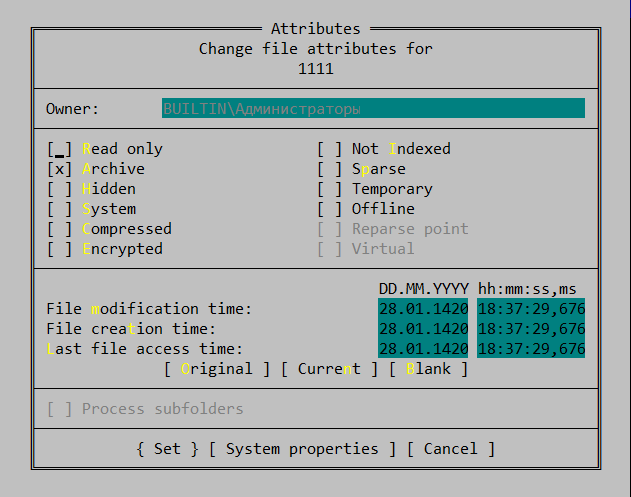
- Putty - the program itself starts, but connections via ssh fail. Telnet - works
- Firefox - started, working. All connections to https are absolutely responsible, they are not trusted and offers to accept the risk or leave. After accepting risk, it works. Cool moment, that's how much disk space Gmail offers me (maybe it's an overflow of the date-time type in Javascript - I'm not good at it, or maybe Google really has such plans)

- Internet Explorer 9 - absolutely the same as Firefox
- 7 zip - works. Dates of newly created files are displayed as December 31, 2107
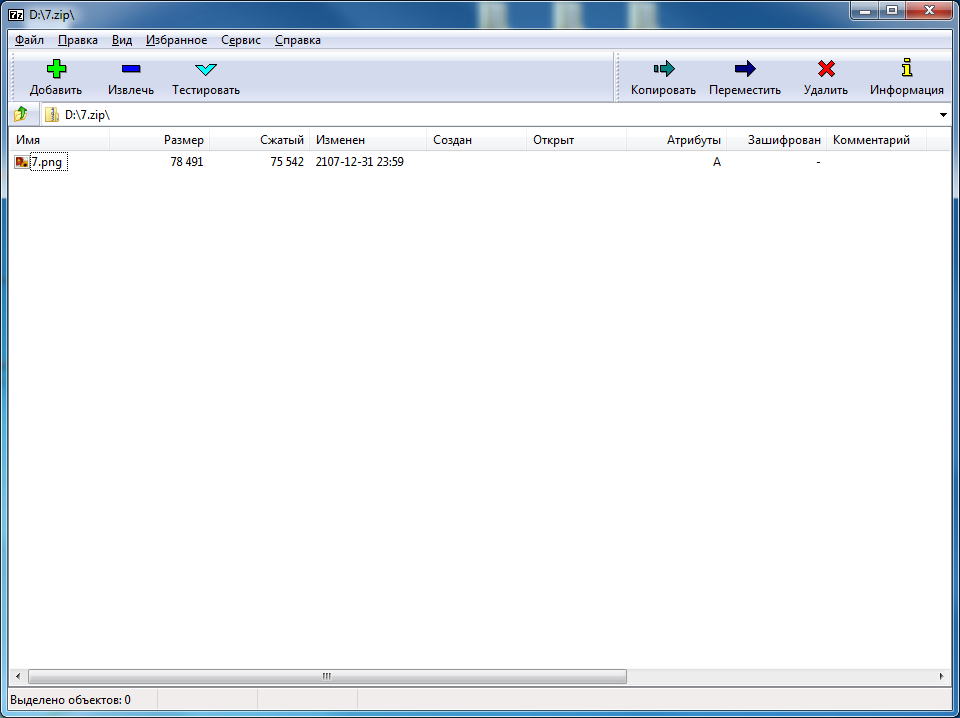

- Windows Explorer - started and started working, however, it fell steadily when trying to call the context menu. I don’t know if this is his fault - I have been integrated into the context menu from five points of different programs (SVN, Notepad ++, Winamp, etc.), maybe the crash was caused by one of them
- Keepass - started up, the main functions worked well. I drew all the icons with crosses, when I dropped the date
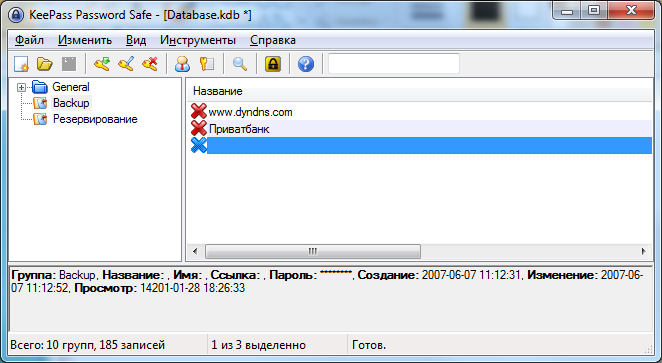
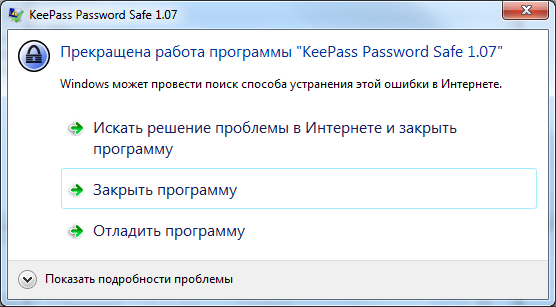

- Windows Scheduler - runs and writes an error about the inability to create a snap-in. Does not fall, but does not work
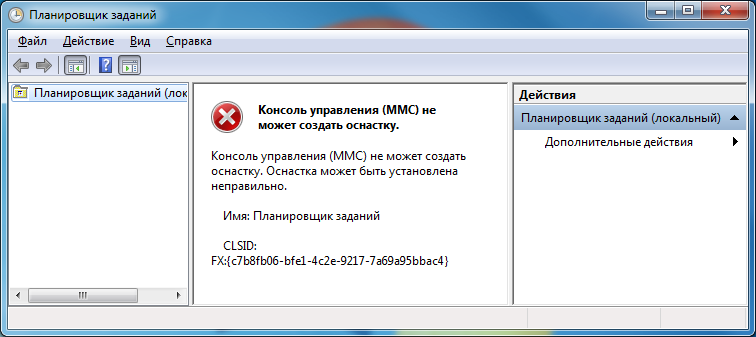
- Dropbox - started, but writes “can't establish secure connection”
- GoogleTalk - crash with error
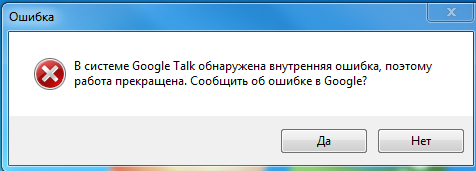
- Skype - crash with error
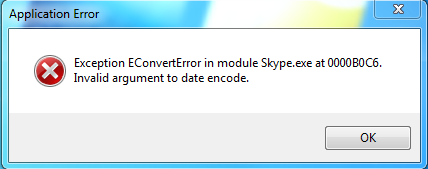
- Qip - falls
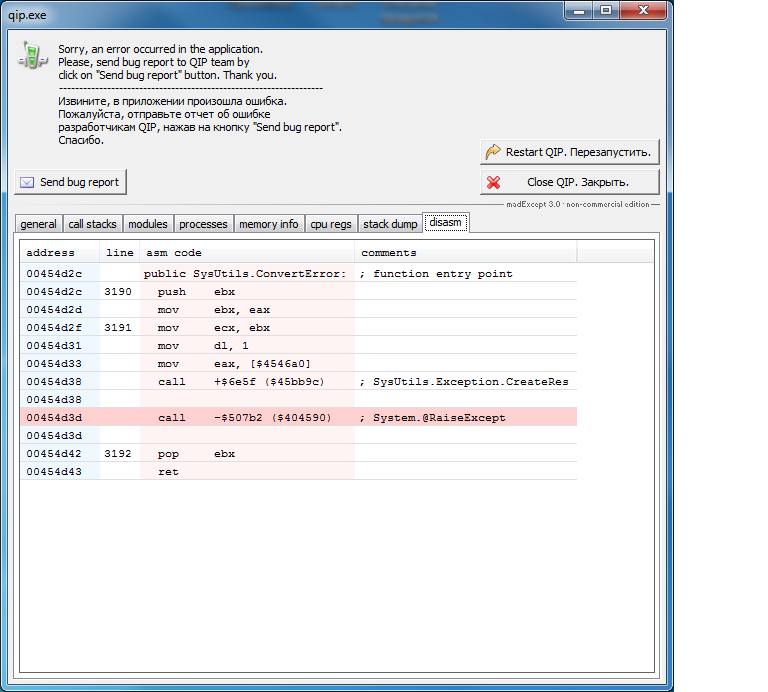
- Visual Studio 2010 - does not start
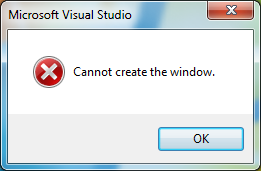
- Adobe Reader - crashes with
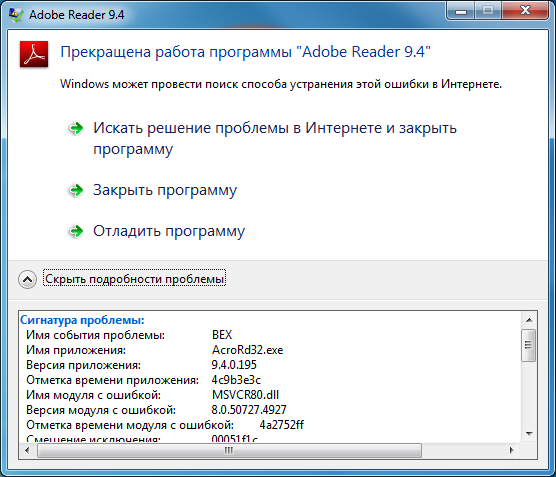
- Notepad ++ - crashes

- DownloadMaster - crashes

findings
- Never worry. We all will not live to these glitches. Besides, they will be fixed by that time. The experiment is purely conditional.
- And so not everything is so bad. The red group is not so great, but it is quite possible to work with programs from the rest.
- Surprisingly, the good quality of Microsoft products — most programs run and work.
- None of today's messengers plan to live long. Hope, apparently, is that by the year 14201 science will invented magic precisely and we will all communicate telepathically.
- Errors of browsers, Dropbox and Putty are most likely caused by the same reason - something related to the duration of SSL certificates, etc. Nevertheless, I took them all to the yellow group, since Tortoise Svn in the same situation correctly earned and received the https code from both our local repository and several from the Internet.
PS
By the end of the experiments, the
Just before returning from 14201, I managed to look at Google Bing in the results of the World Cup 2018. You won’t believe ...
Source: https://habr.com/ru/post/110174/
All Articles